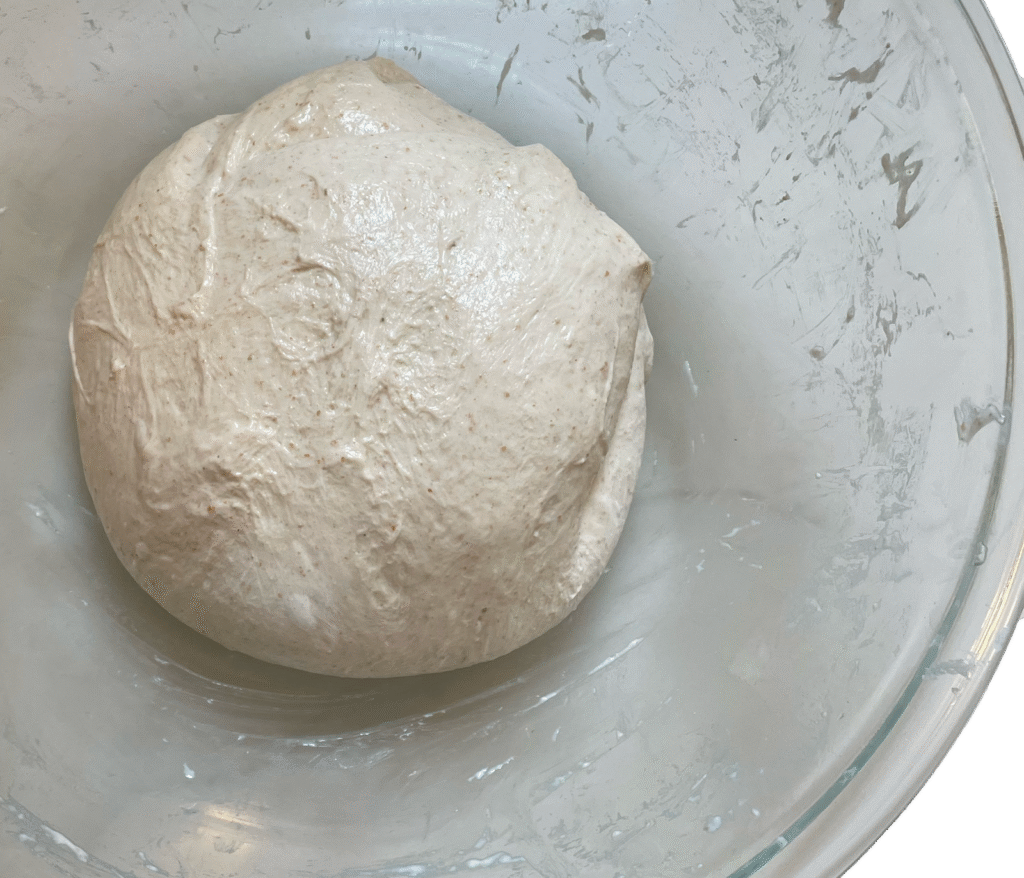Bulk Fermentation
Instructions:
Starting the Bulk Fermentation:
After mixing your dough (levain, flour, water, and salt), bulk fermentation begins. This stage usually lasts 3–5 hours in a warm environment, though time will vary based on room temperature and the strength of your starter.

Stretch and Folds:
For the first 2–3 hours, perform a series of stretch and folds about every 30 minutes: gently pull one side of the dough upward and fold it over onto itself, then rotate the bowl a quarter turn and repeat until you’ve gone all the way around.
These folds strengthen the gluten network, redistribute heat, and incorporate oxygen, which yeast needs for healthy fermentation.
Undisturbed Rest:
After the final stretch and fold, cover the dough and let it continue fermenting undisturbed. It’s ready when it has grown 20–50% in volume, looks slightly domed, and shows bubbles on or just beneath the surface.
What’s Happening during this phase:
Bulk fermentation is the engine of sourdough bread-making. Most of the flavor, structure, and dough strength develop here.
- Fermentation: Yeast and bacteria feed on flour sugars, producing carbon dioxide, alcohol, and organic acids. The gas inflates the dough, while acids and alcohols deepen flavor and condition the dough.
- Gluten Development: Stretch and folds help align gluten strands into a stronger, more elastic network. This network traps gases for better rise and oven spring.
- Temperature Impact: Warmer environments speed fermentation, while cooler ones slow it. Watch the dough, not the clock—time alone doesn’t determine readiness.
- Dough Strength and Maturity: Over time, the dough becomes smoother, more elastic, and easier to handle. Acids from fermentation also improve dough extensibility and help it hold shape during baking.